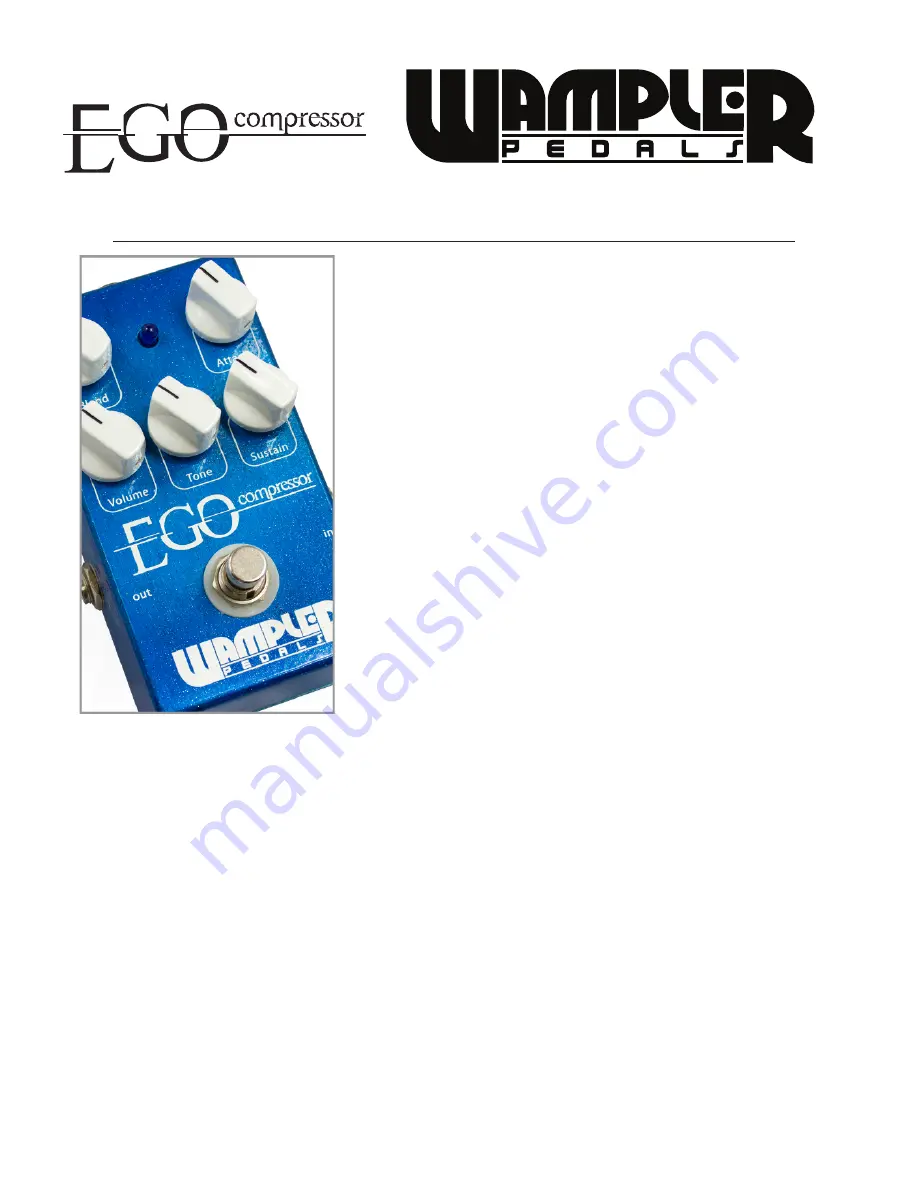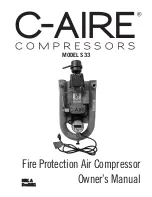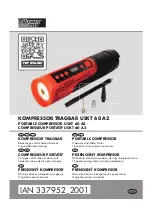
Ego Compressor
TM
TM
Compressors are often misunderstood. A compressor, in the most straightfor-
ward terms, makes loud sounds quieter and quiet sounds louder, "compressing"
the signal's dynamic range. The loudest part of your instrument's note is the
pluck, strum, or pick. That's referred to as the "transient" or the "attack" of the
note, and it is usually quite percussive. The signal gets really loud for a fraction of
a second before the note resonates and fades out. The actual character of the
transient is a huge part of what defines the sound of a given instrument. Control-
ling its level is part of what compressors do, but there's more.
Compressors work to control the overall level of your playing, keeping peaks
from getting too loud and raising the level of the note as it starts to fade out.
Think of it like an automatic volume knob that turns down for loud signals and
turns up for quiet signals. Raising the Sustain control makes it work harder to
make lower volume sounds louder. Raising the Sustain is useful when playing
clean. Careful, though, compressors don't know the difference between notes
and noise, so the more you raise the Sustain, the more noise you can expect. A
compressor usually works best early in the signal chain if you're concerned about
noise!
Some compressors have a really noticeable "pop-in" effect, where they squash
the transient and then quickly raise up to the level of the note. That's because
they are reacting to what they see as a HUGE volume jump in the transient. An
"Attack" knob, which adjusts how quickly the compressor responds, offers some
control. Slower attack will mean less pop-in, but it also won't do as much to
control the loud transient. Faster attack is great for chicken-pickin'.
The most flexible compressors are compressors with "Blend" functionality. A blend compressor lets you mix clean signal with the
compressed signal. That lets the loud transient through, preserving your playing dynamics, but seamlessly takes over to add
sustain and fullness. You can adjust the balance of clean to compressed signal for your needs.
At Wampler Pedals, we make the Ego Compressor, which gives you control over every aspect of an instrument compressor,
including Sustain, Attack, Blend functionality, and even a special Tone knob Brian cooked up over time that can add some extra
sparkle for tones that jangle with the best of 'em. It's a no-compromises compressor that offers the best of all worlds. What else
would you expect from Brian Wampler?
To get the most out of your new pedal, you'll want to become very familiar with the controls. For the Compressor side of things, it
features Volume, Sustain, and Attack controls to dial in your preferred compression behavior, as well as a special Tone control
which lets you go from nothing added to lots of sparkle and chime on top of your signal, adjustable to your preference. It also
features the fantastic Blend knob, letting you easily adjust the degree of compressed to natural signal. If you've never tried a
blend compressor before, you're in for a treat! As with all Wampler Pedals products, the Ego Compressor includes a high-quality
true-bypass switch which takes it completely out of the signal path when bypassed. Experiment and enjoy!
Bypass Switch
– A true-bypass footswitch ensures solid, mechanical removal of the circuit when it isn't wanted, meaning you
don't lose any tone when the pedal is off.
Volume
– This control adjusts the output level of the Ego Compressor. There's plenty of volume on tap, so whether you want to
go farther than your input level or just make sure it can do unity volume (the same level of signal going out as you feed it, when
active), you're covered. The Sustain and Blend controls will have an effect on the total output volume, so you're probably better
off waiting to adjust the Volume until you've dialed in the other controls. Re-adjustment might be necessary if you get it to the
desired level and still need to tweak the sound.




















